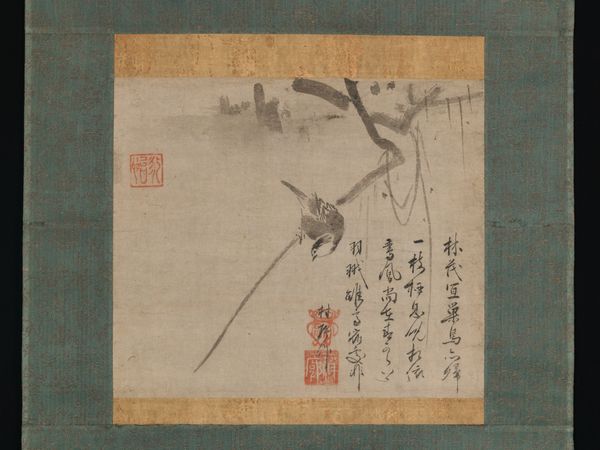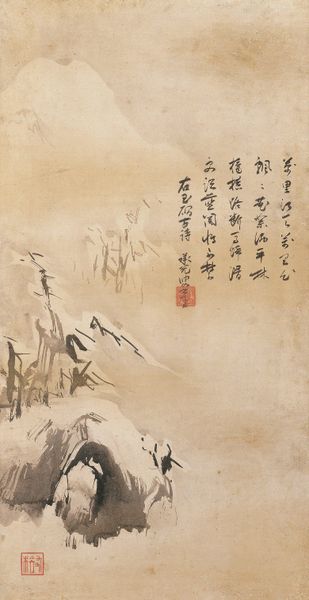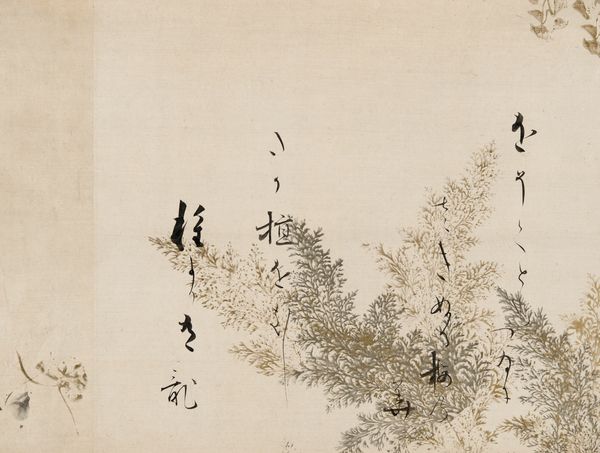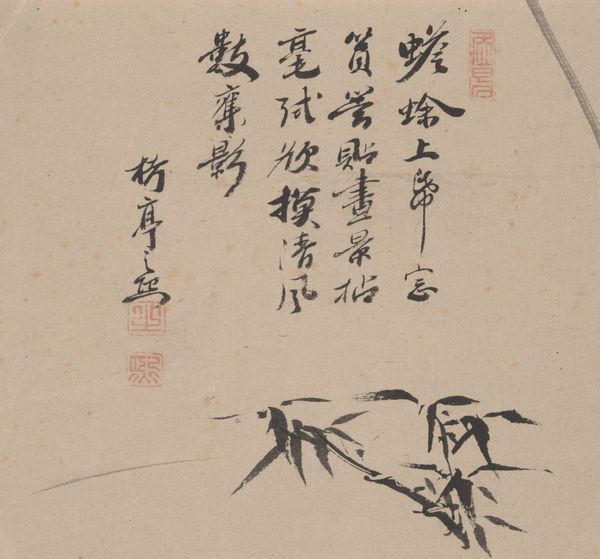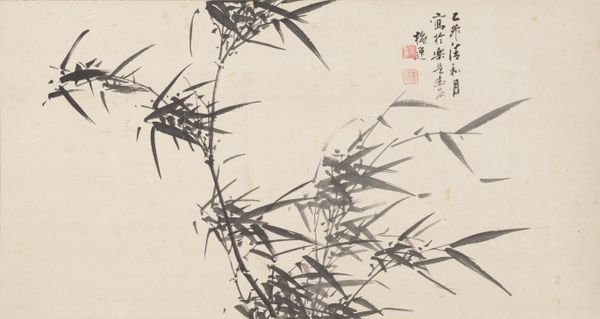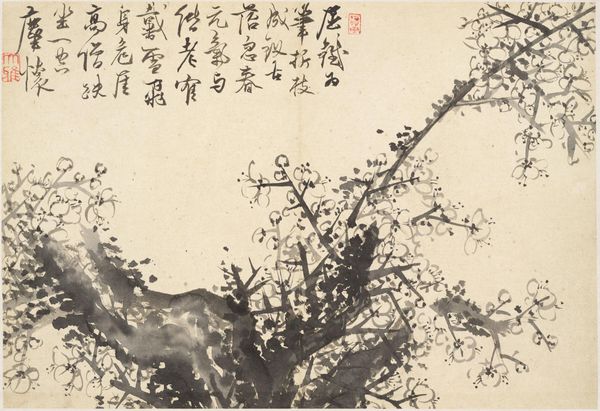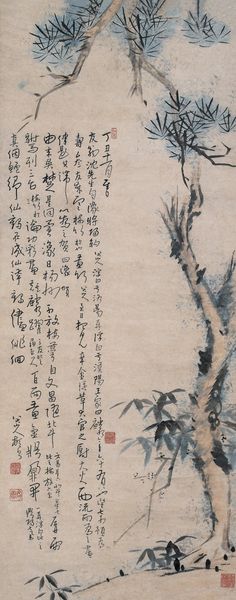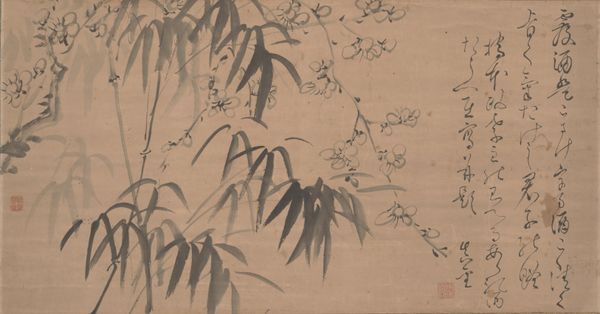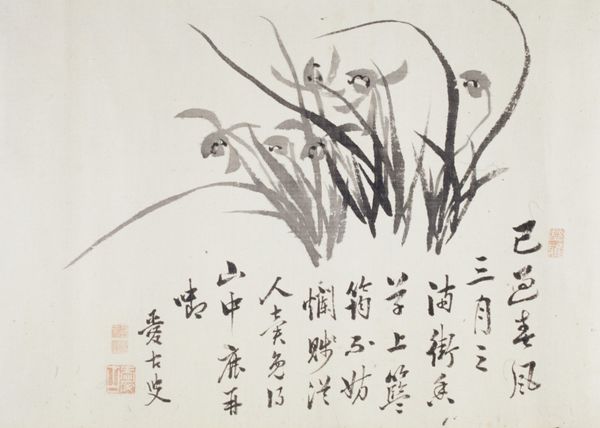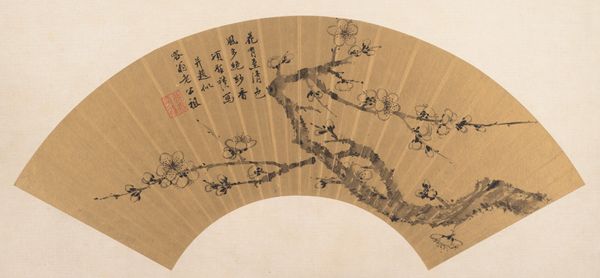
painting, ink
#
narrative-art
#
painting
#
asian-art
#
landscape
#
classical-realism
#
ink
#
20_southern-song-dynasty-1127-1279
#
calligraphy
Dimensions: Overall with mounting: 12 3/4 in. × 42 ft. 9 3/4 in. (32.4 × 1304.9 cm)
Copyright: Public Domain
Editor: We're looking at "Courtly Odes, Beginning with 'Wild Geese'," attributed to Ma Hezhi, created between 1130 and 1170. It’s an ink on silk painting. The delicate brushwork detailing the reeds and the geese gives it a serene feeling. What do you see in this piece? Curator: I am struck by the visual and textual interplay. Observe how the calligraphic text, rendered with meticulous brushstrokes, is not merely descriptive but an integral element of the composition. The stark contrast between the dense, almost tactile reeds and the ethereal quality of the geese in flight creates a compelling tension. Editor: It's interesting you focus on the calligraphy so much! I was drawn to the details of the marshy area. Are there different planes or layers within the painting? Curator: Precisely. The spatial arrangement adheres to traditional Chinese landscape principles, subtly layering the foreground, middle ground, and background, to establish a sense of depth. Note the strategic placement of the geese, guiding the viewer’s eye deeper into the pictorial space. Do you see how the composition invites a continuous, cyclical movement? Editor: Yes, I think so! It's like my eye is never resting, always following the reeds to the geese. What do you mean by cyclical movement? Curator: Note how your eyes move in this sequence of observations. A formal reading illuminates not just aesthetic preferences but also encoded cultural values of harmony. By analyzing the arrangement of elements, a cycle of perception takes shape: Reeds suggest waterfowl; waterfowl lead toward narrative; and finally, this narrative culminates in personal expression through caligraphy, thereby uniting nature with humankind's understanding thereof, through visual elements that resonate due to repetition - similar elements of composition are deliberately repeated in an unending, never resolving and continuously flowing structure of presentation which promotes and almost eternal form. Editor: That really changes how I see it. I thought it was just a landscape, but now I see how all these elements are in conversation, guiding the viewer through the experience of viewing this art piece. Curator: Precisely. By analyzing structure, we grasp meaning.
Comments
No comments
Be the first to comment and join the conversation on the ultimate creative platform.


